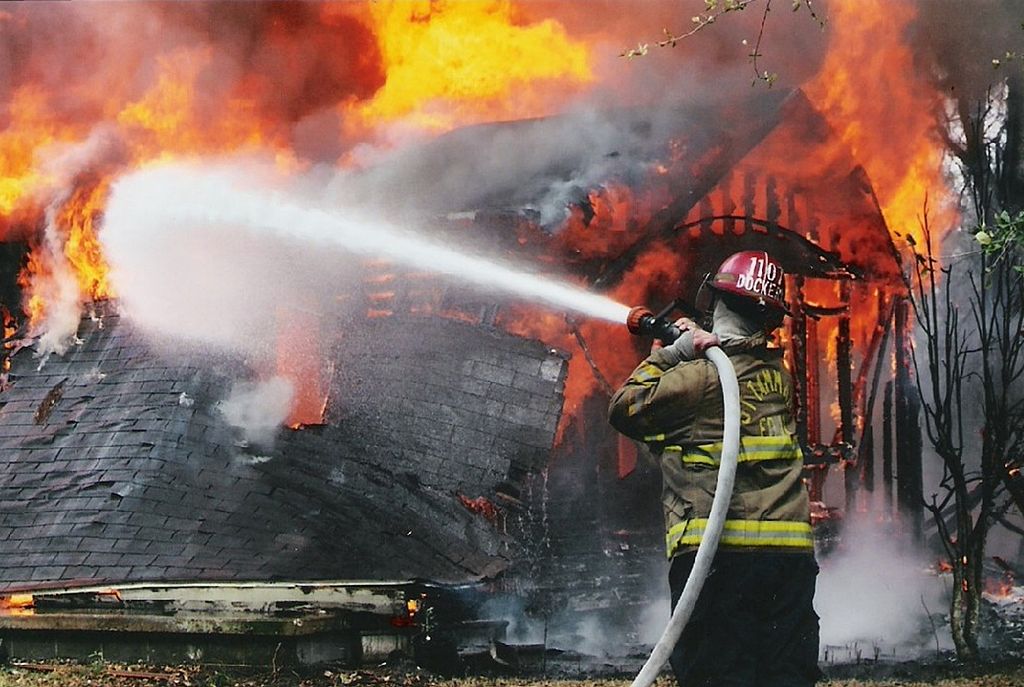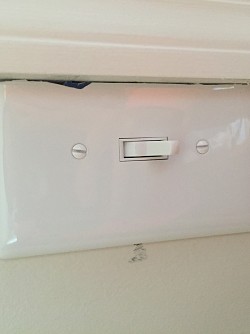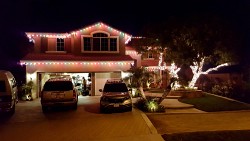House Fire Safety
 Sorry to bring this up just as we're looking forward to the festive season, but did you know house fires increase as the weather gets colder? Thanksgiving is the biggest day of the year for conflagrations in the home, with Christmas Day and Christmas Eve as close runners-up. Let’s keep the holidays happy with these house fire safety tips.
Sorry to bring this up just as we're looking forward to the festive season, but did you know house fires increase as the weather gets colder? Thanksgiving is the biggest day of the year for conflagrations in the home, with Christmas Day and Christmas Eve as close runners-up. Let’s keep the holidays happy with these house fire safety tips.
House Fire Prevention
Cook ultra carefully. Unattended cooking -- especially frying -- is the Number One cause of house fires. The National Fire Protection Association warns never to leave the kitchen while doing any type of cooking, and not to cook while sleepy or tipsy.
Don’t smoke indoors. Smoking is another leading source of house fires. Even if you can’t quit, at least don’t smoke inside the home … and never, ever, ever smoke in bed.
Use electric devices safely. Avoid dangerous overload; find an electrician to upgrade your breaker panel if you use lots of appliances and electronics. Inspect electrical items for problems: frayed cords, melted or blackened outlets, and damaged plugs. Connect space heaters directly to the outlet, never to an extension cord.
Inspect your insulation. Home insulation, normally a good thing, becomes risky when installed too close to recessed light fixtures and other electric devices. For protection, add a cylinder of flashing 4’ or more wider than the fixture.
Ensure furniture is firesafe. Modern materials like engineered wood and synthetic upholstery can be hazardous. Check furniture’s fire resistance; certification by the Upholstered Furniture Action Council or California Bureau of Home Furnishings means it’s less combustible than the norm. Position at least 3’ from heat source or open flame.
Have your chimney and fireplace inspected annually, before your first fire. This ensures the chimney and connected appliances (yes, even gas fireplaces and other appliances venting out your chimney) are in good working order. Per the NFPA, a CSIA Certified Chimney Sweep® will inspect your system and perform a sweep and maintenance, as necessary, to reduce the risk of a chimney fire and carbon monoxide poisoning. In wood-burning appliances, use only dry, seasoned wood to increase efficiency and slow creosote buildup.
Fire Protection Technology
Install smoke alarms near all sleeping rooms. Dual sensor house fire alarms detect smoldering fires as well as flames. They may alert you with a voice warning (which wakes sleeping children more reliably than a simple beep or siren) or a low-frequency sound or strobe lights (for hearing-impaired household members). Test alarms monthly and replace batteries twice a year.
Install a home sprinkler system. Installing a sprinkler system in your residence cuts down on flames, smoke, and heat if a house fire occurs. The NFPA reports civilian death rate from fires drops 81 percent in homes with fire sprinklers. Injuries to our heroes, the firefighters, are also substantially reduced. Mist-type systems minimize water damage.
Use smart house technology. Set up an early warning to your mobile phone for dangers like sudden extreme rises in indoor temperature (which may indicate a house fire), flood, or intruders. Connect to your local first response station. Also useful: a motion-sensing device which switches off the stove when you’ve left the kitchen.
Scan vital documents. Scan birth certificates, house deed, or homeowners insurance not kept in a safety deposit box, then store securely on the Cloud. This simplifies replacement should fire destroy the originals. Register your will online with your state or private will registry service.
Low Tech Safety Prep
Close your door. Keeping bedroom doors shut at night dramatically slows the spread of house fire. The UL Firefighter Safety Research Institute's public awareness campaign encourages everyone to “take the pledge” to close their door. I've taken the pledge. Please join me.
Keep exits clear. Every sleeping area should have at least 2 doors or windows to get out (or let first responders in). Store an emergency ladder next to each upper-story bedroom window.
Ensure your house number is easily visible. Make sure the digits are is not faded, obscured by dirt or paint, or covered by foliage. This may shave all-important seconds off emergency personnel’s response time.
Keep a fire extinguisher on hand for small, contained fires, like trashcan flare-ups. Teach your family the PASS formula:
- Pull pin.
- Aim nozzle at fire’s base.
- Squeeze trigger.
- Sweep nozzle side-to-side.
Get out fast. Don’t stop to grab prized possessions – your life is worth more. Have a household evacuation plan, reviewed via regular fire drills. Call the fire department once you're safely outside.
Laura Firszt writes for networx.com.
Looking for a Pro? Call us (866) 441-6648

Average Costs
Related Experiences

Electrical Installation As Part Of A Living Room-to-Office Conversion

Hardworking Handyman Brings Christmas To Southern California



